2019 wasn’t quite a record-setting travel year for me, but it was still among my busiest. Internationally, I got to visit Japan in the winter, and Sweden and Iceland in the summer. Domestically, I spent a lot of time on the east coast and in the Midwest, but somehow managed not to ever make it out to the Pacific time zone.
Table of Contents
Hotels

Nights Away from Home by Year. Includes both business and personal nights.
Travel was down slightly this year, but I still ended up spending 110 nights away from home. The plurality of my personal nights were for my summer trip to Sweden and Iceland; most of the rest consisted of a lot of short weekend trips or visits to friends and family.
Flights

Number of Flights by Year. Includes both business and personal flights.
I ended the year with 106 flights, totaling 74 110 miles (119 268 km).
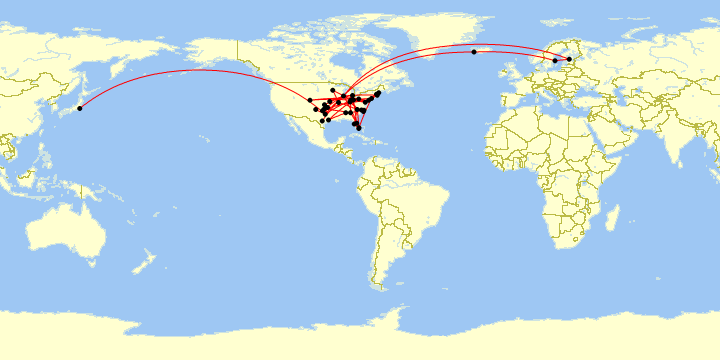
Flights (2019)
Map generated by Paul Bogard using the Great Circle Mapper - copyright © Karl L. Swartz
This was my first year with two separate international trips. I had a work trip to Tokyo in February, and a vacation to Stockholm and Reykjavík in August.
The Tokyo trip was my first time trying out American Airlines’ 777 premium economy class; my job only pays for economy flights, but I was able to purchase a same-day upgrade with my own money for a reasonable price on my Dallas to Tokyo flight. For a 13-hour flight, it was pretty much exactly what I needed; lots of extra legroom, a little extra width, and a nice side pocket to keep devices while they’re charging.
I also upgraded to premium cabins for some of the flights on our vacation; we upgraded to business class at check-in on the Finnair Chicago to Helsinki flight, and won a bid on business class upgrades on the Icelandair Reykjavík to Chicago flight.
The Icelandair 757 business class was closer to a domestic first class flight—lots more room, better service, but no lay-flat bed. Since it was a daytime flight, beds weren’t necessary.
The Finnair A330-300 business class had lay-flat beds, which was nice for the overnight flight. However, at 6′5″ (196 cm), I’m too tall for the bed, so I didn’t really sleep any better in the bed than in my AA premium economy seat. I don’t believe that flight had a premium economy option, but for my future long-haul flights, I’ll probably just upgrade to premium economy rather than business since the beds don’t provide me enough extra benefit for the enormous cost difference.
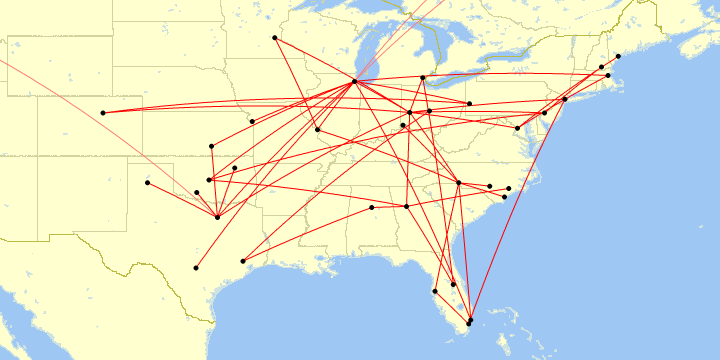
Map generated by Paul Bogard using the Great Circle Mapper - copyright © Karl L. Swartz
Domestically, I spent a lot of time in the Great Plains (particularly Oklahoma) and the east coast.

I decided to try a new visualization of how I flew using a directed graph. I wrote a small module for Flight Historian that could convert flights from my database into a GraphML file, then used yEd Graph Editor to convert it to a radial arrangement.
On this graph, each circle is an airport I visited at least once this year, and each arrow is a flight I took this year. (The circular arrow by Oklahoma City [OKC] shows my flight where we took off from OKC, and had to return to OKC due to a mechanical issue.)
My busiest routes were between Dayton (DAY) and Dallas/Fort Worth (DFW) or DAY and Chicago O’Hare (ORD), with strong showings for DAY ⇄ Charlotte (CLT) and DAY ⇄ Philadelphia (PHL) as well. This makes sense, as Dayton is my home airport, these other airports are all American hubs that serve DAY, and American was my most flown airline this year.
In the last few months of the year, I flew a number of trips on Delta, which brought me a decent number of flights between Dayton and Atlanta (ATL).
New Airports

I visited 10 new airports this year.
| # | Code | Airport | First Visit |
|---|---|---|---|
| 92 | NRT |
Japan
|
10 Feb 2019 |
| 93 | FLL |
Florida,
United States
|
16 Mar 2019 |
| 94 | FAY |
North Carolina,
United States
|
11 Jun 2019 |
| 95 | PIT |
Pennsylvania,
United States
|
24 Jun 2019 |
| 96 | BHM |
Alabama,
United States
|
18 Jul 2019 |
| 97 | MCI |
Missouri,
United States
|
29 Jul 2019 |
| 98 | HEL |
Finland
|
19 Aug 2019 |
| 99 | ARN |
Sweden
|
19 Aug 2019 |
| 100 | MIA |
Florida,
United States
|
18 Oct 2019 |
| 101 | ILM |
North Carolina,
United States
|
30 Dec 2019 |
By picking up Fort Lauderdale (FLL) and Miami (MIA) this year, I finally visited all of the large hubs in the United States.
New Airlines
Finnair was my only new airline in 2019. As they are a Oneworld alliance member, I was able to use my American Airlines miles to book them for my trip to Stockholm (via a layover in Helsinki).
New Aircraft
I did not fly any new aircraft families in 2019.
Driving

Distance Driven by Year. Includes both business and personal driving.
I drove approximately 24 902 miles (40 076 km) in 2019.
| Personal Cars | 15 418 mi | 24 813 km |
| Rental Cars | 9 484 mi | 15 263 km |
| Total | 24 902 mi | 40 076 km |
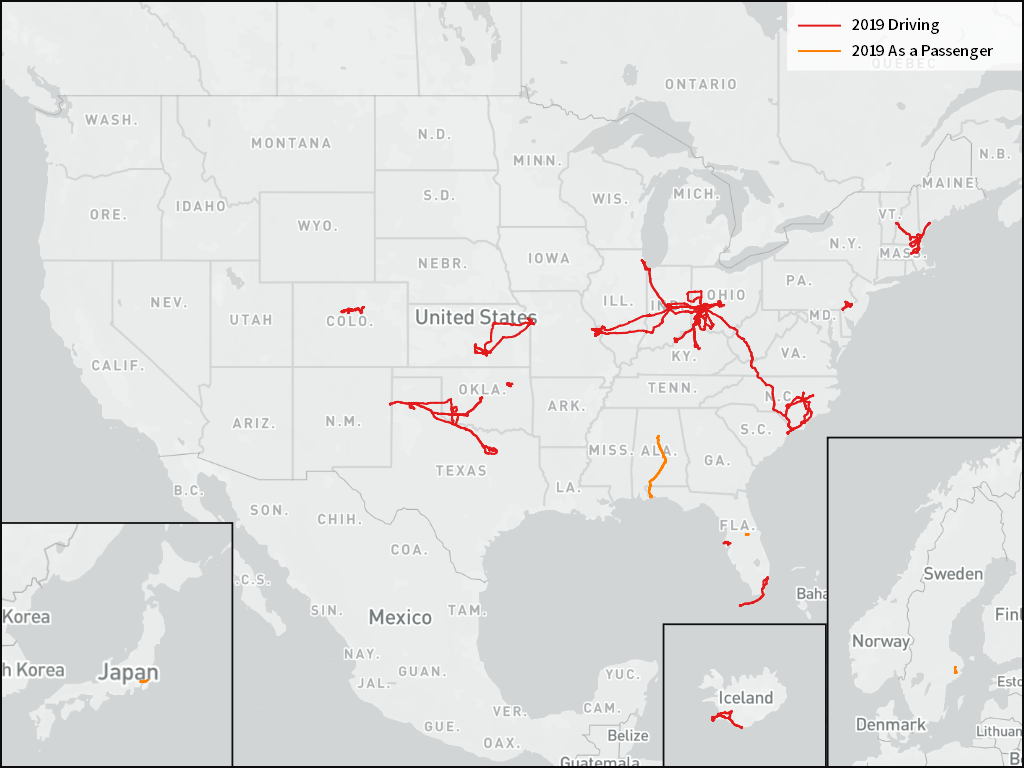
Map tiles © OpenStreetMap contributors
Altus (in southwestern Oklahoma) contributed to a lot of my rental driving—it’s not possible to drive directly into Altus, so I’ve flown into a variety of airports in the region (largely Oklahoma City, Dallas/Fort Worth, and Amarillo). I also had one trip where I flew into Kansas City to drive to Wichita, rather than flying into Wichita directly.
Similarly, I didn’t have the option to fly directly into Portsmouth, New Hampshire on several trips there this year, which lead to some driving to other New England airports.
I visited Key West and drove the Overseas Highway (the southern terminus of U.S. Highway 1) for the first time this year.
States and Countries

I visited 24 states this year, five for the first time: New Mexico, Delaware, Alabama, Minnesota, and Vermont.

I visited four countries this year, two for the first time: Japan and Sweden. (I also had a layover in Finland, but since I did not leave the airport, I don’t count it as a visited country for the purposes of this map.)
Frequent Traveler Status

For the first time, I earned status with IHG (from a number of Holiday Inn stays), reaching their gold tier. I also maintained my Diamond status with Hilton, and my Platinum status with American.
Superlatives
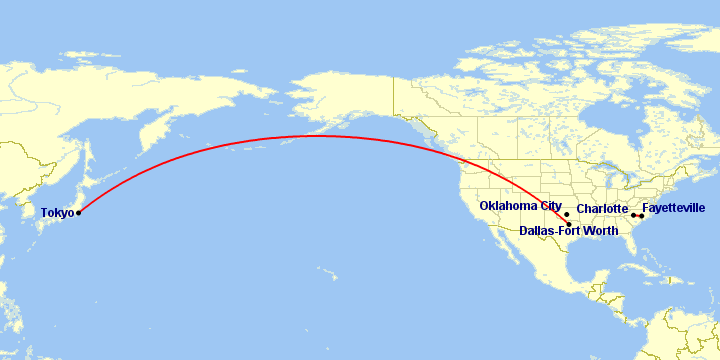
Map generated by Paul Bogard using the Great Circle Mapper - copyright © Karl L. Swartz
- My longest two flights were my 6414 mile (10 322 km) flight between Dallas and Tokyo, and the same route in reverse coming home.
- My shortest flight took off from and returned to OKC due to a mechanical issue, traveling a net zero distance.
- My shortest flights that actually went somewhere were my 117 mile (188 km) flight from Charlotte to Fayetteville, North Carolina, and the same route in reverse.
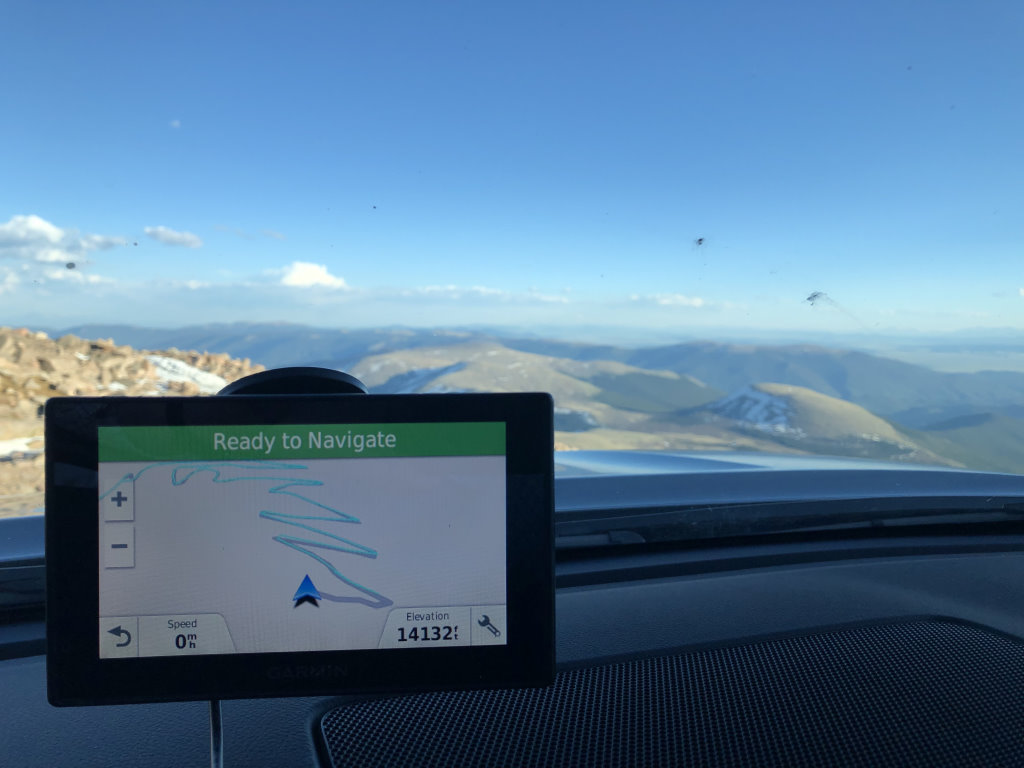
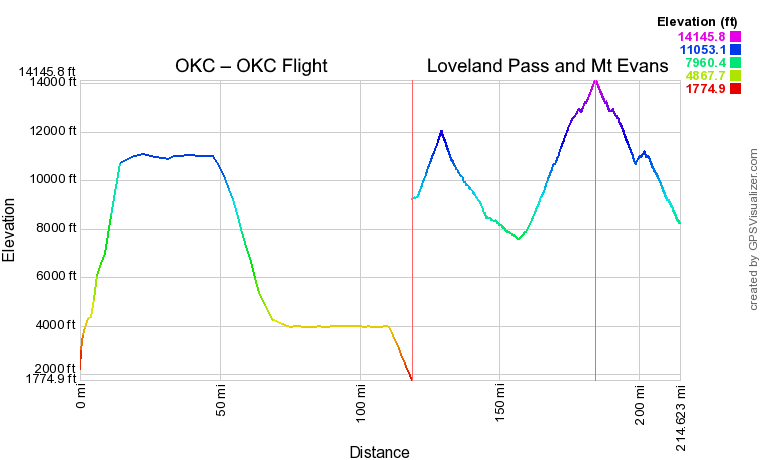
- I drove at my highest elevation ever (approximately 14 140 feet or 4310 meters) by driving up Mount Evans1 via Colorado State Highway 5—the highest paved road in North America. That’s a higher elevation than my OKC–OKC flight, which only reached 11 076 feet (3375 m) altitude before returning to the airport.
-
Mount Evans was renamed to Mount Blue Sky in 2023. ↩︎
